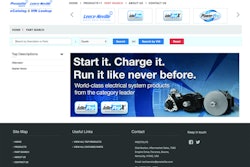In late 2015 I bought new tires for my car.
The tires I had at the time weren’t quite to the point where I absolutely needed to replace them, but you know that feeling in the fall when the wind goes from pleasant to evil, the sun decides it doesn’t work here anymore and you start instinctively evaluating every system on your vehicle like you’re about to go into space?
That’s where I was.
My heater needed to breathe fire. The wipers needed to give me the best view in town. And the tires? Well, like their friction friends in the wheel end, my tires needed to be ready to start working snovertime. (I’m sorry. That was awful.)
Anyway, I had reached that point in the year where I had to determine if the equipment on my car would last through to the spring. When it came to my tires, I had concerns. They had done everything I’d asked of them since I’d owned the car, but my mileage and a wear check told me their end was on the horizon. Maybe they’d last another nine weeks, maybe only five.
With the haunting vision of a snowy, congested Chicago roadway on my mind, I decided to avoid the future headache and get new ones that day.
Then I did the one thing you hope every one of your customers doesn’t do, the one thing that makes your job and the job of every sales person in every vehicle industry in North America cringe. I went online.
I know, I know. I’m not sure what I was thinking. Being in this role in this industry I know a bit about tires, but I’m not the Michelin Man, either. I wasn’t educated enough to find the exact perfect option for my car and my needs. But, I had an Internet connection, so I went for it.
A couple hours later, I rolled into my local tire distributor with a list of all-weather models I wanted to see. I was about 80 percent sold on one model, with a back-up plan in case my first choice was out of stock.
I had become the challenging customer I write about. Fortunately for me, the sales consultant behind the counter was familiar with my brand of online expertise and about two minutes later we were looking at another tire I didn’t even know they had. It did everything I wanted, was warrantied for a longer period than my preferred online choice and was the same price.
As Jim Pancero would say, I got hit with the five quick questions.
Pancero, who keynoted the GenNext and CVSN Distributor Training Expo last month, says the five quick questions are probing questions sales professionals ask know-it-all customers that enable them to better understand their customers’ needs and determine if the product they came in for will actually work for what they want it to do.
He says the questions can be anything a business wants them to be, but ideally, they should be simple questions — What is your daily route? How much weight do you need to haul? — that encourage a customer to respond.
Pancero says he first developed the idea when working with John Deere’s dealer network as a way to better help its counter people assist customers who entered stores wanting to buy a lawnmower.
Says Pancero: “When you ask the questions, it allows you to regain control of the buying process.” The customer’s allegiance shifts from his Google search to your expertise. It creates a relationship that can become the partnership every business wants.
And because I know you’re wondering, the tires the salesperson recommended have been excellent. Of course they have.











